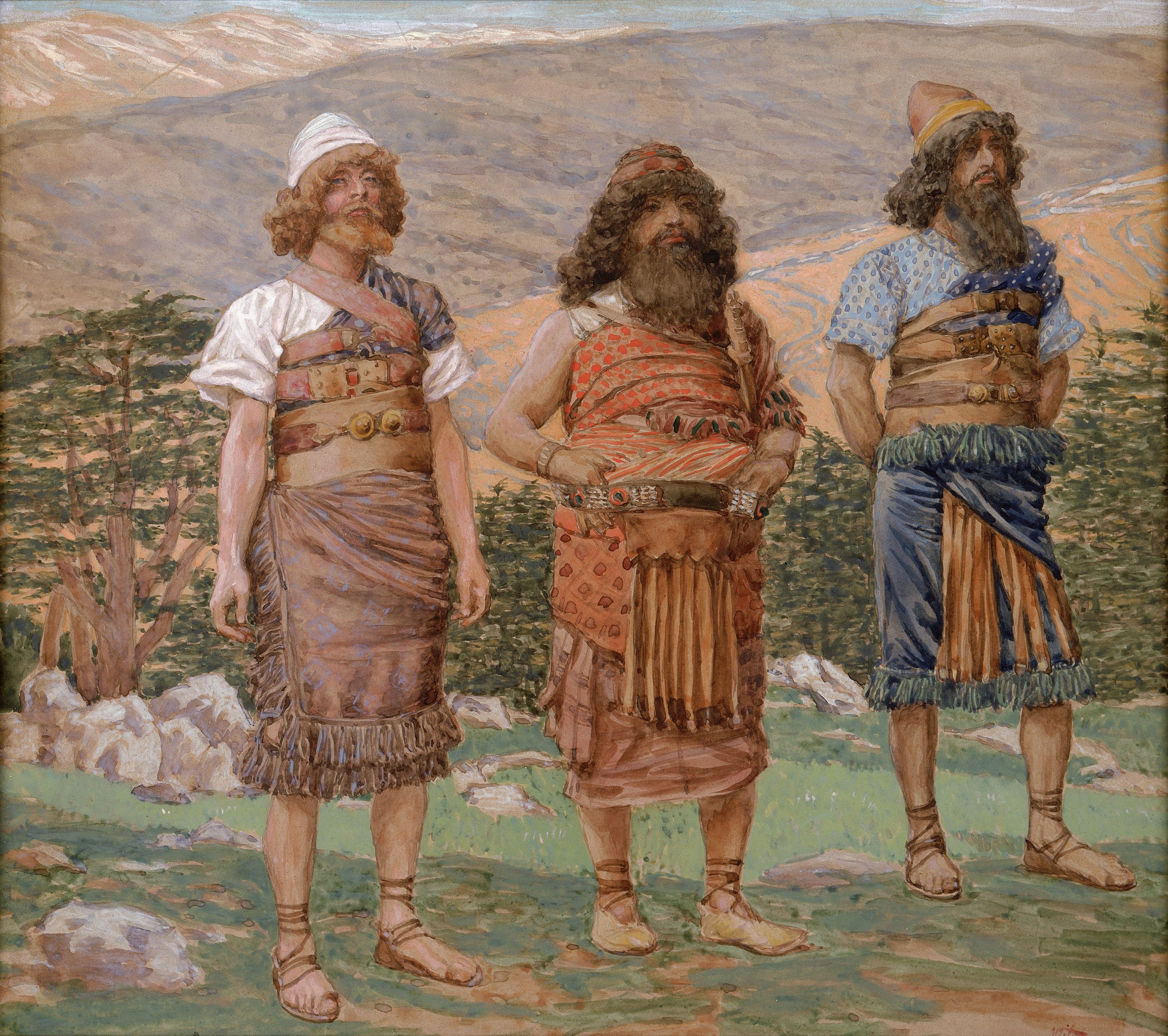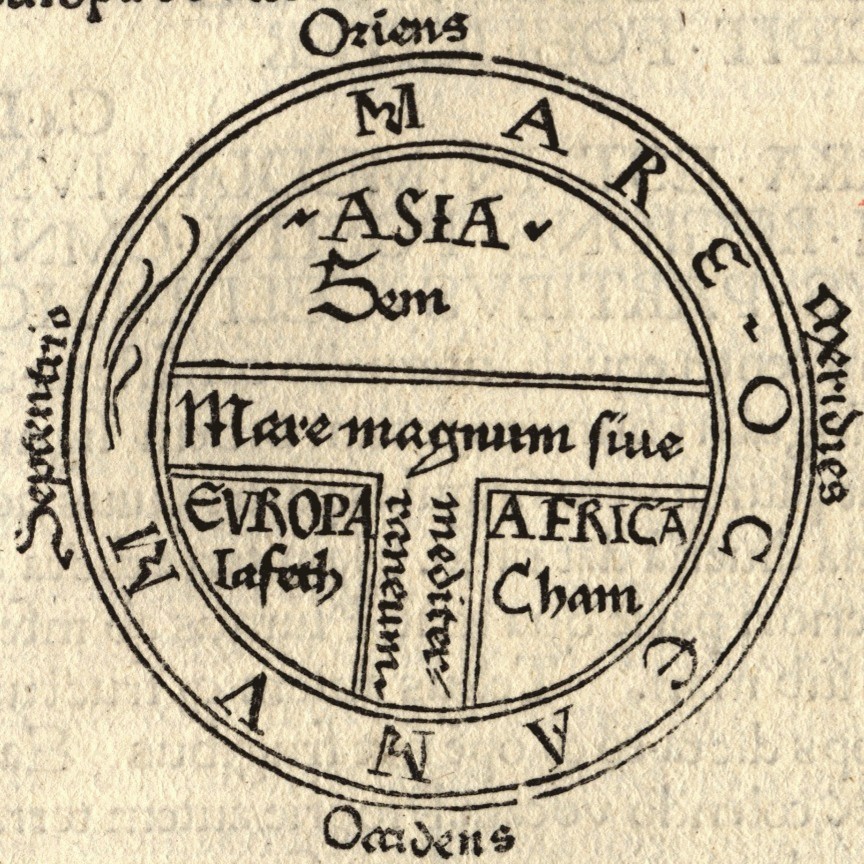|
Hazarmaveth
Hazarmaveth ( hbo, חֲצַרְמָוֶת, italic=no, rtl=yes, ''Ḥăṣarmāweṯ''; ar, حضر موت, italic=no, rtl=yes) is the third of thirteen sons of Joktan, who was a son of Eber, son of Shem in the table of the Sons of Noah in Genesis chapter 10 and 1 Chronicles chapter 1 in the Bible. This Table of Nations lists purported founders of neighboring ethnic groups or nations. Genesis 10:26 ''"...And Joktan hath begotten Almodad, and Sheleph, and Hazarmaveth, and Jerah..."'' Hazarmaveth, also transcribed ''Hazarmaueth'', means "dwelling of death" (Hitchcock's Bible Dictionary) and is composed of two parts in Hebrew: ''hazar/ḥaṣar'' ("dwelling" or "court") and ''maveth/mawet'' ("death"). (There are alternative systems for transliterating Hebrew into Latin letters.) In the Ethiopic version, the name is ''Hasremot''. Scholars of Semitic languages have related the name to the ancient region of Hadhramaut in the modern Southern Arabian nation of Yemen, and indeed, on ... [...More Info...] [...Related Items...] OR: [Wikipedia] [Google] [Baidu] |
Joktan
Joktan (also written as Yoktan; ; ar, يقطان, translit=Yaqṭān) was the second of the two sons of Eber (Book of Genesis 10:25; 1 Chronicles 1:19) mentioned in the Hebrew Bible. He descends from Shem, son of Noah. In the Book of Genesis 10:25 it reads: "And unto Eber were born two sons: the name of one was Peleg; for in his days was the earth divided; and his brother's name was Joktan." Joktan's sons in the order provided in , were Almodad, Sheleph, Hazarmaveth, Jerah, Hadoram, Uzal, Diklah, Obal, Abimael, Sheba, Ophir, Havilah, and Jobab.In Pseudo-Philo's account (ca. 70), Joktan was first made prince over the children of Shem, just as Nimrod and Phenech were princes over the children of Ham and Japheth, respectively. In his version, the three princes command all persons to bake bricks for the Tower of Babel; however, twelve, including several of Joktan's own sons, as well as Abraham and Lot, refuse the orders. Joktan smuggles them out of Shinar and into the mou ... [...More Info...] [...Related Items...] OR: [Wikipedia] [Google] [Baidu] |
Shem
Shem (; he, שֵׁם ''Šēm''; ar, سَام, Sām) ''Sḗm''; Ge'ez: ሴም, ''Sēm'' was one of the sons of Noah in the book of Genesis and in the book of Chronicles, and the Quran. The children of Shem were Elam, Ashur, Arphaxad, Lud and Aram, in addition to unnamed daughters. Abraham, the patriarch of Jews, Christians, and Muslims, was one of the descendants of Arphaxad. Islamic literature describes Shem as one of the believing sons of Noah. Some sources even identify Shem as a prophet in his own right and that he was the next prophet after his father. Shem is mentioned several times in Genesis 5-11 as well as 1 Chronicles 1:4. In the Bible Genesis 10 Genesis 10:21 refers to relative ages of Shem and his brother Japheth, but with sufficient ambiguity to have yielded different English translations. The verse is translated in the King James Version as: "Unto Shem also, the father of all the children of Eber, the brother of Japheth the elder, even to him ... [...More Info...] [...Related Items...] OR: [Wikipedia] [Google] [Baidu] |
Hadhramaut
Hadhramaut ( ar, حَضْرَمَوْتُ \ حَضْرَمُوتُ, Ḥaḍramawt / Ḥaḍramūt; Hadramautic: 𐩢𐩳𐩧𐩣𐩩, ''Ḥḍrmt'') is a region in South Arabia, comprising eastern Yemen, parts of western Oman and southern Saudi Arabia. The name is of ancient origin, and is retained in the name of the Yemeni Governorate of Hadhramaut. The people of Hadhramaut are called Hadhrami. They formerly spoke Hadramautic, an old South Arabian language, but they now predominantly speak Hadhrami Arabic, which has much influence from Hadramautic. Etymology The origin of the name of ''Ḥaḍramawt'' is not exactly known, and there are numerous competing hypotheses about its meaning. The most common folk etymology is that the region's name means "death has come," from ar, حَضَر, ḥaḍara, lit=he came and ar, مَوْت, mawt, lit=death, though there are multiple explanations for how it came to be known as such. One explanation is that this is a nickname of ... [...More Info...] [...Related Items...] OR: [Wikipedia] [Google] [Baidu] |
Sons Of Noah
The Generations of Noah, also called the Table of Nations or Origines Gentium, is a genealogy of the sons of Noah, according to the Hebrew Bible (Genesis ), and their dispersion into many lands after the Flood, focusing on the major known societies. The term ''nations'' to describe the descendants is a standard English translation of the Hebrew word " goyim", following the 400 CE Latin Vulgate's "nationes", and does not have the same political connotations that the word entails today. The list of 70 names introduces for the first time several well-known ethnonyms and toponyms important to biblical geography, such as Noah's three sons Shem, Ham and Japheth, from which 18th century German scholars at the Göttingen School of History derived the race terminology Semites, Hamites and Japhetites. Certain of Noah's grandsons were also used for names of peoples: from Elam, Ashur, Aram, Cush, and Canaan were derived respectively the Elamites, Assyrians, Arameans, Cushites, and ... [...More Info...] [...Related Items...] OR: [Wikipedia] [Google] [Baidu] |
Table Of Nations
The Generations of Noah, also called the Table of Nations or Origines Gentium, is a genealogy of the sons of Noah, according to the Hebrew Bible (Genesis ), and their dispersion into many lands after the Flood, focusing on the major known societies. The term ''nations'' to describe the descendants is a standard English translation of the Hebrew word " goyim", following the 400 CE Latin Vulgate's "nationes", and does not have the same political connotations that the word entails today. The list of 70 names introduces for the first time several well-known ethnonyms and toponyms important to biblical geography, such as Noah's three sons Shem, Ham and Japheth, from which 18th century German scholars at the Göttingen School of History derived the race terminology Semites, Hamites and Japhetites. Certain of Noah's grandsons were also used for names of peoples: from Elam, Ashur, Aram, Cush, and Canaan were derived respectively the Elamites, Assyrians, Arameans, Cushites, ... [...More Info...] [...Related Items...] OR: [Wikipedia] [Google] [Baidu] |
Sheba
Sheba (; he, ''Šəḇāʾ''; ar, سبأ ''Sabaʾ''; Ge'ez: ሳባ ''Saba'') is a kingdom mentioned in the Hebrew Bible (Old Testament) and the Quran. Sheba features in Jewish, Muslim, and Christian traditions, particularly the Ethiopian Orthodox Tewahedo tradition. It was the home of the biblical " Queen of Sheba", who is left unnamed in the Bible, but receives the names ''Makeda'' in Ethiopian and ''Bilqīs'' in Arabic tradition. According to Josephus it was also the home of the biblical " Princess Tharbis" said to have been the first wife of Moses when he was still a prince of Egypt. There are competing theories of where this kingdom was, with some placing it in either South Arabia or the Horn of Africa. Encyclopedia Britannica posits that the biblical narrative about the kingdom of Sheba was based on the ancient civilization of Saba ( Old South Arabian: 𐩪𐩨𐩱 ''S-b-ʾ'') in South Arabia. This view is echoed by Israel Finkelstein and Neil Asher Silberman ... [...More Info...] [...Related Items...] OR: [Wikipedia] [Google] [Baidu] |
Yemen
Yemen (; ar, ٱلْيَمَن, al-Yaman), officially the Republic of Yemen,, ) is a country in Western Asia. It is situated on the southern end of the Arabian Peninsula, and borders Saudi Arabia to the north and Oman to the northeast and shares maritime borders with Eritrea, Djibouti, and Somalia. Yemen is the second-largest Arab sovereign state in the peninsula, occupying , with a coastline stretching about . Its constitutionally stated capital, and largest city, is Sanaa. As of 2021, Yemen has an estimated population of some 30.4 million. In ancient times, Yemen was the home of the Sabaeans, a trading state that included parts of modern-day Ethiopia and Eritrea. Later in 275 AD, the Himyarite Kingdom was influenced by Judaism. Christianity arrived in the fourth century. Islam spread quickly in the seventh century and Yemenite troops were crucial in the early Islamic conquests. Several dynasties emerged in the 9th to 16th centuries, such as the Rasulid dynasty. T ... [...More Info...] [...Related Items...] OR: [Wikipedia] [Google] [Baidu] |
Semitic Languages
The Semitic languages are a branch of the Afroasiatic language family. They are spoken by more than 330 million people across much of West Asia, the Horn of Africa, and latterly North Africa, Malta, West Africa, Chad, and in large immigrant and expatriate communities in North America, Europe, and Australasia. The terminology was first used in the 1780s by members of the Göttingen school of history, who derived the name from Shem, one of the three sons of Noah in the Book of Genesis. Semitic languages occur in written form from a very early historical date in West Asia, with East Semitic Akkadian and Eblaite texts (written in a script adapted from Sumerian cuneiform) appearing from the 30th century BCE and the 25th century BCE in Mesopotamia and the north eastern Levant respectively. The only earlier attested languages are Sumerian and Elamite (2800 BCE to 550 BCE), both language isolates, and Egyptian (a sister branch of the Afroasiatic family, related to the Semitic la ... [...More Info...] [...Related Items...] OR: [Wikipedia] [Google] [Baidu] |
Hebrew Language
Hebrew (; ; ) is a Northwest Semitic language of the Afroasiatic language family. Historically, it is one of the spoken languages of the Israelites and their longest-surviving descendants, the Jews and Samaritans. It was largely preserved throughout history as the main liturgical language of Judaism (since the Second Temple period) and Samaritanism. Hebrew is the only Canaanite language still spoken today, and serves as the only truly successful example of a dead language that has been revived. It is also one of only two Northwest Semitic languages still in use, with the other being Aramaic. The earliest examples of written Paleo-Hebrew date back to the 10th century BCE. Nearly all of the Hebrew Bible is written in Biblical Hebrew, with much of its present form in the dialect that scholars believe flourished around the 6th century BCE, during the time of the Babylonian captivity. For this reason, Hebrew has been referred to by Jews as ''Lashon Hakodesh'' (, ) since a ... [...More Info...] [...Related Items...] OR: [Wikipedia] [Google] [Baidu] |
Almodad
Almodad ( ''’Almōḏāḏ'') was a descendant of Noah and the first named son of Joktan in and . While the Bible has no further history regarding Almodad, this patriarch is considered to be the founder of an Arabian tribe in "Arabia Felix". This is based on the identification of Joktan's other sons, such as Sheba and Havilah, who are both identified as coming from that region. According to '' Easton's Bible Dictionary'' "Almodad" means "immeasurable", however it has also been translated as "not measured", "measure of God", "the beloved," or, "God is beloved", "God is love", and "God is a friend". Many translations and scholarly works use "Elmodad", including Josephus, Douay–Rheims Bible and the Targum Ps.-Jonathan, which elaborates Gen 10:26 and says "begot ''Elmodad'', who measured the earth with cords." See also * List of minor biblical figures, A–K A ''list'' is any set of items in a row. List or lists may also refer to: People * List (surname) Organizations ... [...More Info...] [...Related Items...] OR: [Wikipedia] [Google] [Baidu] |


.jpg)

.jpg)


